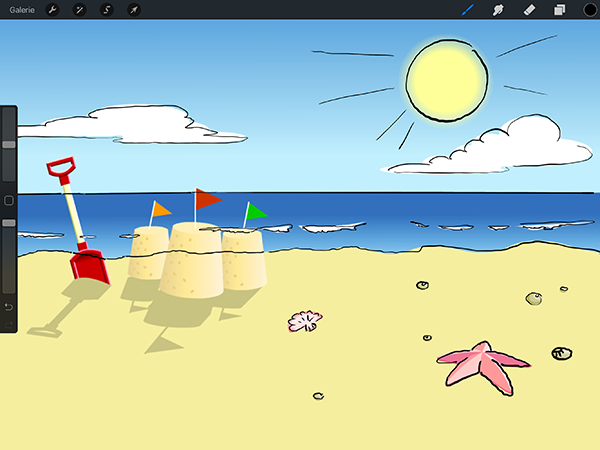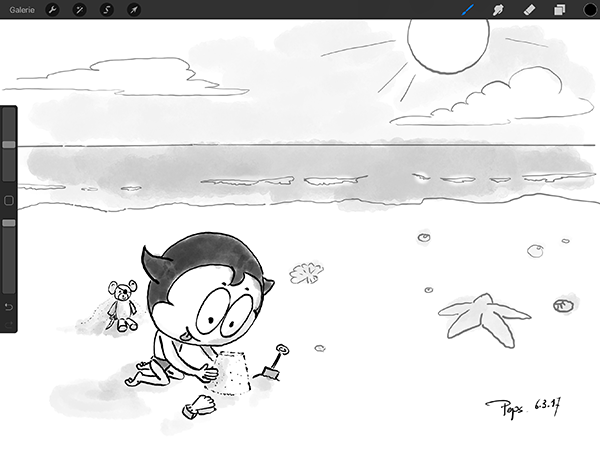Drawing backgrounds can be a chore, yet they’re essential for creating a context for storytelling purposes. There’s also something incredibly satisfying about providing rich, entertaining scenes for your cartoon characters.
Here’s a shortcut for finding and adapting simple drawing backgrounds in next to no time.
Harnessing the GoogleBot for Drawing Backgrounds
Google is invaluable when it come to inspiration for drawing backgrounds. You may need to jiggle the phrases that you search for, but in no time you’ll probably come up with a result like this:

Then it’s a matter of finding one that approximately suits your purpose.
I say approximately because no scene is ever a perfect fit, and it shouldn’t be :). The idea here is to avoid relying 100% on your memory (which generally lets us down on detail), not to ‘nick’ someone else’s work and pass it off as our own.
Once you have selected a suitable scene, it’s time to decide what elements to retain and what to adapt or ignore.
What to keep, what to adapt?

If you chose your reference well, the bones of good composition may already be in place. You can check those at the next stage, when you draw in the Rule of Thirds grid).
The most important thing to check is the horizon line. Is it at a suitable level (preferably near the top or bottom third of the frame)? If it’s not, that would be a good place to start your changes.
In terms of smaller details already in the frame, decide what serves your story and what will just be a distraction.
In this seaside example you can see that our budding artist elected to
– keep the horizon, wave line, clouds, sun and seashells but
– leave out the spade and sandcastle.
What if you’re drawing backgrounds with pencil and paper?
In the picture above that our artist was drawing digitally, which meant it was easy to take an image from on line and trace it quickly. Is it a lot trickier with good ol’ pencil and paper?
The answer is a resounding “No!”
You can just as easily copy the background elements you need directly from your computer screen onto paper. The main challenge with that will probably be adapting the existing scene to fit in with the proportions of your physical page.
If you wanted some subconscious practice at drawing backgrounds, you could use the tracing approach with physical tools by copying and pasting the image into a word document and printing it out as a tracing reference.
Now it’s time to place your character
The Rule of Thirds grid comes in handy at this stage, so draw that in to remind yourself of the 4 visual hotspots or powerpoints that you might want to use to place your character. I still use this grid in every cartoon I draw, and I recommend that you make a habit of it, too.

Having placed your character, you’ll want to add some colour or shading
Sticking to greyscale saves time and can still produce a dramatic and lively result as is clear from the final image below.
Having the character neatly positioned on a Rule Of Thirds powerpoint also ensures that she is the centre of attention. In addition, the black of her hair stands out bright and clear against the broad, white expanse of the beach.

But hang on a moment — this feels wrong!
Isn’t it cheating to use someone else’s work as a springboard for drawing backgrounds of our own?
Back in school we were always admonished to come up with our own ideas, no matter how bad they seemed . Copying anyone else was frowned upon. And yet the best of artists have always used external references and even the work of other artists as a springboard for their own work.
There is no shame in copying.
It’s the fastest way to learn (any time you visit a great art museum you’ll find people copying the work of the masters).
And when it comes to creating, as long as you adapt and add your own favour rather than recreating something and then passing it off as your own, you’re not cheating in the least.
So here are those steps again
– Google for a selection of drawing backgrounds that might suit your purpose
– elect a suitable one, that is already well composed
– decide what to keep, what to ignore and what to adapt
– add the Rule of Thirds grid and position your character
– add colour or shading
Et voilà!
There you have it — a quick process for generating drawing backgrounds without hours of fruitless attempts.
Deepest thanks and credit to Peter Schmitt, Visual thinker over at http://www.bildungsblog.de for screen-shotting and sharing his process at he beginning of Composition Week over on the Da Vinci forum :).
—
Questions? Suggestions?
If you’re not 100% clear about drawing cartoon faces (or you have a question about something totally unrelated to this video), I’d love to hear from you.
Leave a comment and who knows? Your question could spark off an exciting new lesson series!
